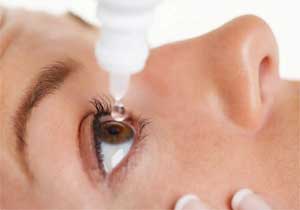- Home
- Editorial
- News
- Practice Guidelines
- Anesthesiology Guidelines
- Cancer Guidelines
- Cardiac Sciences Guidelines
- Critical Care Guidelines
- Dentistry Guidelines
- Dermatology Guidelines
- Diabetes and Endo Guidelines
- Diagnostics Guidelines
- ENT Guidelines
- Featured Practice Guidelines
- Gastroenterology Guidelines
- Geriatrics Guidelines
- Medicine Guidelines
- Nephrology Guidelines
- Neurosciences Guidelines
- Obs and Gynae Guidelines
- Ophthalmology Guidelines
- Orthopaedics Guidelines
- Paediatrics Guidelines
- Psychiatry Guidelines
- Pulmonology Guidelines
- Radiology Guidelines
- Surgery Guidelines
- Urology Guidelines
Positive results for voclosporin ophthalmic solution in Dry Eye: Phase 2 study

Aurinia Pharmaceuticals has announced positive results for its exploratory Phase 2 head-to-head study evaluating the efficacy, safety and tolerability of voclosporin ophthalmic solution (VOS 0.2%) versus Restasis®(cyclosporine ophthalmic emulsion 0.05%) for the treatment of dry eye syndrome (DES).
Key features of voclosporin ophthalmic solution are-
- Voclosporin ophthalmic solution, VOS showed statistical superiority to Restasis® on FDA-accepted objective signs of DES
- 42.9% of VOS subjects vs 18.4% of Restasis® subjects (p=.0055) demonstrated ≥ 10mm improvement in STT at Week 4
- The primary endpoint of drop discomfort at 1-minute on Day 1 showed no statistical difference between voclosporin ophthalmic solution VOS and Restasis®, as both exhibited low drop discomfort scores
- Aurinia to advance voclosporin ophthalmic solution VOS for the treatment of dry eye syndrome,DES
The 100-patient, double-masked study compared voclosporin ophthalmic solution 0.2% and Restasis (cyclosporine ophthalmic emulsion 0.05%, Allergan) twice daily in both eyes for 28 days.
The primary endpoint of drop discomfort at 1 minute on day 1 was not statistically significantly different between the two drugs. However, at 4 weeks, the study drug demonstrated a statistically significant improvement in Schirmer tear test (P = .0051) and in fluorescein corneal staining (P = .0003) vs. Restasis.
No serious adverse events were reported in the study, and there were no unexpected safety signals.
“Improvements in STT and FCS are considered by regulators to be two of the most clinically meaningful measures of efficacy in this disease. The rapid onset and overall efficacy (as measured by the STT and FCS) demonstrated by VOS in this head-to-head study conducted against Restasis® is astounding and could be a game changer in the treatment landscape for dry eye,” said Joseph Tauber, M.D., Principal Investigator and head of the renowned Tauber Eye Institute in Kansas City.
Neil Solomons, M.D., Aurinia’s Chief Medical Officer said, “We are extraordinarily excited with the superior efficacy shown by VOS when compared to Restasis®, which is the current market leader for the treatment of DES in the US. The efficacy endpoints exceeded our expectations and provide further validation of the potential of VOS to provide a highly differentiated and efficacious treatment option for the more than 16 million patients living with this all-too-common disease.”
“Based on these positive data, we plan to aggressively advance VOS for the treatment of DES, which we believe can create considerable value for both patients and our shareholders,” said Richard M. Glickman, Chairman and CEO of Aurinia. “Our pursuit of further development of VOS provides the company with an enhanced pipeline that further capitalizes on the differentiating features of voclosporin and positions us for substantial growth.”

Disclaimer: This site is primarily intended for healthcare professionals. Any content/information on this website does not replace the advice of medical and/or health professionals and should not be construed as medical/diagnostic advice/endorsement or prescription. Use of this site is subject to our terms of use, privacy policy, advertisement policy. © 2020 Minerva Medical Treatment Pvt Ltd